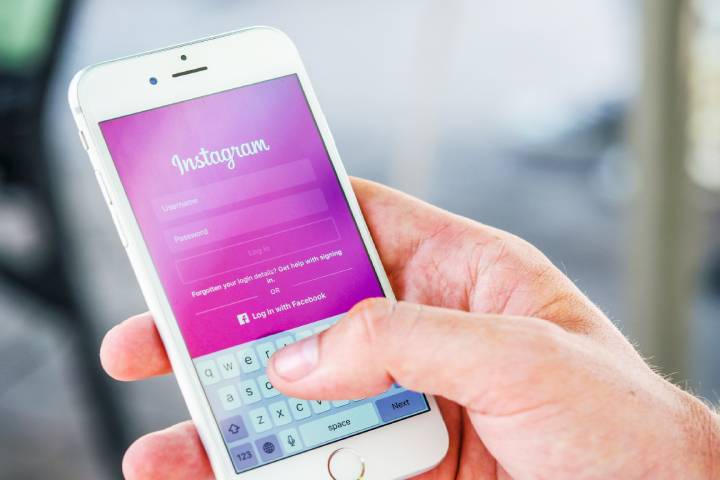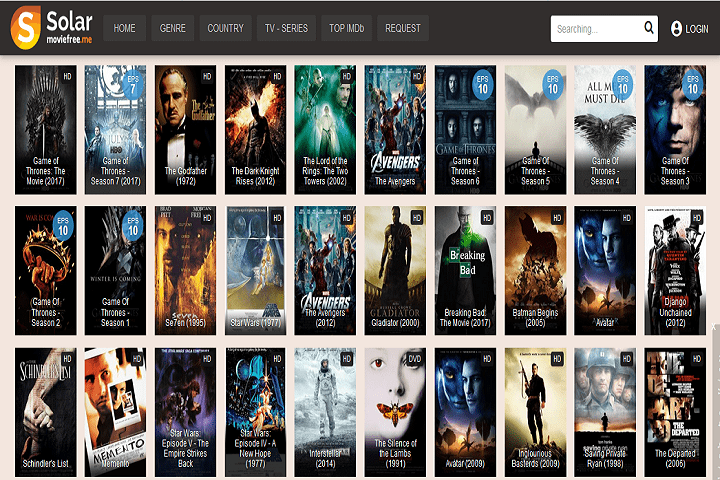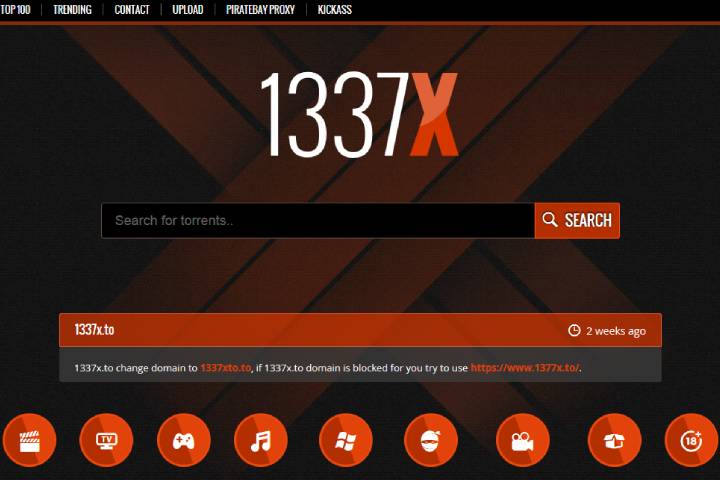Technology
5 Tips For An Outbound Dialing Strategy
5 Tips For An Outbound Dialing Strategy. Send Mass Texts Without Being Intrusive, Set Up Your Telemarketing Goals and KPIs, Train Your Agents

Marketing holds enormous power for business success. Without effective marketing strategies, how will you present your products and services to your target audience? As marketing initiates awareness and recognition of your brand, everything else will follow—conversions, loyal customers, more prominently online and offline presence, and higher sales and profit.
Traditional or outbound marketing is a tried-and-true marketing approach to numerous industries. Outbound marketing typically involves outbound sales calls, a strategy that most consumers leave a terrible impression on. If utilized in a positive light, outbound dialling can do wonders for your venture.
With these in mind, consider these five essential tips in establishing and refining your outbound dialling strategy:

Table of Contents
1. Choose The Best Outbound Dialing Service Provider
Hiring, multiple agents, to handle your telemarketing calls manually is heavily inefficient and expensive and less likely to gain returns. Instead of settling with traditional outbound calling practices, investing in outbound dialling services can be worthwhile.
Since the service provider will be the heart of your outbound marketing efforts, it’s paramount to choose companies specializing in business dialling, like Call Cowboy. An outbound dialling service provider can reimagine how you use your phone, as they can even transform it into a powerful dialer.
To narrow down your choices, it would be ideal if your chosen provider offers the following features and capabilities with your availed services:
- Provides a toll-free, local number
- Call disposition codes
- Auto dialling
- Call recording and monitoring
- Customer relationship management (CRM) system integration
- Historical and real-time reporting
- Integration with other marketing campaigns
2. Send Mass Texts Without Being Intrusive
Receiving text messages repeatedly from a business is as upsetting as receiving calls. Along with dialling calls to prospective clients, you can engage in mass messaging by sending text and voice messages to customers.
Messaging service providers like Drop Cowboy can help you send text messages and ringless voicemails straight into the recipient’s inbox.
To avoid being intrusive and inconvenient, here are some tips when sending messages to your leads:
- Be aware of and observe the Telephone Consumer Protection Act (TCPA)
- Send messages only upon consent, including subscriptions via text, in-person, email, or website
- Pick the right time to send your messages
- Personalize your messages for a deeper connection
- Keep your brand voice consistent
3. Set Up Your Telemarketing Goals and KPIs
Before starting any mission, you have to have specific objectives to achieve, and these will tell you if you’ve succeeded. In terms of your outbound calling campaign, make sure to pinpoint your goals—are you encouraging more leads to know more about your brand? Do you want to increase the sale of your products and services?
Having a clear objective in mind will aid your execution process. To monitor your progress during a given project timeframe, setting up your business’s key performance indicators (KPIs) and marketing metrics is also crucial. The occupancy rate, conversion rate, first call closes, and average handle time are examples of KPIs for outbound telemarketing.
4. Train Your Agents
While your dialling system will primarily handle the campaign’s technical ins and outs, your agents are essential pieces of the puzzle. Whenever a human voice picks up a call, your calling software will forward the call to your agent. The skills, professionalism, and character of your agent will significantly affect the customer’s experience.
Therefore, allotting the time, budget, and effort in training your agents are worth considering. Take note of the following training tips to implement on your employees:
- Train them to fulfil KPI benchmarks
- Emphasize the importance of schedule adherence
- Teach agents to write good call scripts
- Improve the speaking and connecting aspects of agent communication
- Provide hands-on, practical training individually
5. Write An Effective Call Script
Last but not least is to pay attention to how you connect to leads and prospects. Since your conversion chances increase during the call, your agents should leave a positive impression and even persuade customers to get in touch with your company. Your call scripts will have a crucial part to play.
When making a useful call script, always keep in mind that your agents don’t have to be by the book. As long as the flow is articulate, natural-sounding, engaging, and makes customers feel valued, it has higher possibilities of a successful conversion.
How To Effectively Engage Prospects For Better Sales Calls
All your efforts to establish and refine your outbound dialling strategy will go to waste if your agents can’t engage prospects during the call effectively. What sets the most successful sales and marketing service professionals from the pack is that they don’t just talk like they’re lecturing their audiences; they understand how to engage customers properly.
Simply saying, the best agents work on genuinely connecting with prospects. If engagement is something your call centre struggles with, you might want to check out the short checklist below that will help ensure more engaging and successful sales calls.
a. Know Your Audience
Agents need to know who they’re talking to in advance to have successful sales calls. If possible, tell your employees to do some research before contacting an individual and their company. If they’re unsure of who they’ll be speaking with until they’re actually in the call, tell your agents to get the prospect to provide them with some context.
When agents know who their audience is, they can direct the conversation where it’s comfortable for the prospects or customers and profitable for your company. It helps ensure that the audience is engaged instead of looking for excuses to get your agents off the phone.
b. Be Mindful Of Your Leads’ Time
Time is gold. A lot of people consider it the most valuable currency. Your agents should show respect to leads by letting prospects know that your company values their time as much as they do. Remind your telemarketers to ask prospective customers how much time they have available before launching into their pitch.
c. Grab Their Attention
The first few seconds of a call is of utmost importance. If your agents don’t pique the prospect or customer’s interest, the latter won’t have much to lose if they decide to hang up. Agents should call the audience by their name and show them that they’re interested in them.
Furthermore, your agents shouldn’t forget to try to know the prospect’s situation and offer solutions for its betterment. They should avoid making the mistake of centring the whole conversation around them or end up sounding cookie-cutter.
d. Understand Your Product Or Service
Ideally, telemarketers have enough product or service knowledge to properly provide an impromptu demonstration or explanation if the need arises. Such a situation is indeed unlikely, but their understanding will help agents to confidently answer all questions that may arise about the product or service your company is offering. They can do it without having to put prospects on hold to ask someone more knowledgeable.
e. Make Sure You And The Person You’re Calling Is On The Same Page
The telemarketers in your company know your product or service from the inside out. But, how about the people on the call’s other end? It doesn’t matter how intimately your agents know your product. What matters most is how well their knowledge resonates with your prospects and customers.
You don’t want to be contented with your leads saying they get what you meant; guide them. Do your best to change how your telemarketers approach this aspect of the call and begin seeing much better results.
f. Ask The Right Questions
No customer likes to be lectured, especially when it’s a sales call. Agents need to make sure they’re asking questions to engage prospects meaningfully.
Are your employees asking the right questions? That’s why it’s worthwhile that agents do their homework, and only choose to work with qualified leads they already have a measure of significant intel about.
g. Practice Active Listening
Many telemarketers try to have their response lined up before the lead has even finished his sentence. Remind your agents not ever do it! Tell them it’s always better to wait for the prospects to finish making their point before determining what to say in response.
Practising active listening is not only a common conversational courtesy, but it can also get you further with your prospect. Remember that it’s not witty to have an answer ready all the time; it’s rude.
h. Be Willing To Go Off Script
As already mentioned, a call script is an essential component of an outbound dialling strategy. It can be handy, especially in cold calls. However, agents don’t have to be afraid to stray from a loose script if the circumstances require it. They should only rely on it when they hit an absolute standstill.
That’s because customers are more likely to respond much better if telemarketers infuse a little bit of storytelling and humour in the sales call. Reading off bullet points will only get agents so far; it’s the same result that you’ll get by just reading stale call calls-to-action.
i. Don’t Make Any Promises You Can’t Keep
Being able to whip up the lead’s enthusiasm is an indication that the initial call is successful. However, it’s also when telemarketers fail to resist the temptation of rushing in a blaze of glory because the conversation is going well.
Remind your agents not to make any commitment without knowing the ins and outs of the prospect’s situation first. They have to run long on the first call to be able to understand their audience better. Making promises that you can’t follow up with actions will only result in the prospect’s trust in your company forever gone.
j. Don’t Rush For An Outcome.
Telemarketers should always keep in mind that they’ll be able to talk to leads again. With that being said, there’s no need to go through their entire sales pitch in one conversation just because they’ve got someone on the other line right now.
Customers become more receptive to a pitch down the road if an agent can have a good talk with them today. It’s another reason why telemarketers have to be mindful of their prospective customers’ time.
If someone says he only has little time to be in a conversation, agents should only gather information during the call and figure out ways to pitch to the prospect at a later date.
k. Set A Follow-Up Call | Outbound Dialing
That’s what a follow-up call is for. Telemarketers in your company should quickly set the best time for subsequent pitching while the iron is still hot once they already have the prospect’s interest.
That way, they’ll be able to end the conversation on a high note and prepare the follow-up call properly. Agents coming off as professional and more knowledgeable rather than someone rushing to close the deal is sure to bode well among your company’s prospective clients.
l. Write Down Takeaways
Most businesses now use a CRM (customer relationship management) system, and chances are you have one. Tell your agents to take notes in the CRM. One way of making sure they’re hearing what customers have to say is by capturing their words in the form of letters. Writing down something might give meaning to something which might have otherwise been banter.
As telemarketers record their chat logs and takeaways, they’re building relationships with prospects much faster than if they didn’t. If your agents have to call a lead a few times, notes will help ensure that they aren’t starting over at square one every time they speak to the prospective customer.
Bottom Line | Outbound Dialing
Marketing comes in various forms, and outbound telemarketing is one of its most significant and influential. There’s no exact formula in choosing the best marketing types and approaches, as it’ll boil down to how you’ll utilize it for your business.
Suppose you’re looking into incorporating an outbound dialling campaign for your business. In that case, it’s paramount to understand what the approach is all about first, tailor-fit the steps involved in your business, and consider these tips discussed to increase your chances of succeeding in the outbound dialling landscape.
It’s also essential to note that even if every company has its technique for using an outbound dialling campaign to turn prospects into customers, engagement is the most significant defining factor.
It’s impossible to consistently get good results without engaging your clients in ways that matter to them. Hopefully, this post has also helped you figure out how to make your sales calls go the exact way you want them.
AI Tools
How to Learn New Technologies and Tools More Easily
If you apply these strategies consistently, and maintain a healthy, adaptive mindset, you should have no trouble learning the new technologies and tools that become relevant to you.

In your personal and professional lives, you’ll occasionally run into new technologies and tools that have the potential to make your life easier but can also be very hard to learn. Learning how to operate machines safely and effectively can be a challenge, so how do you make it easier for yourself?
1. The Value of Learning New Technologies and Tools
There are several reasons why you might be interested in learning new technologies and tools. For most people, the primary motivation is developing or improving a set of skills that will be valuable in their jobs or careers. For example, if you become aerial lift certified online, you’ll gain the knowledge and experience necessary to safely operate certain types of lifting machinery, like aerial lifts, scissor lifts, and cherry pickers. This can make you more valuable to employers, give you more responsibilities, and help you make more money.
You may also be obligated to learn new technologies for your job. For example, if your employer rolls out a new ERP software system, you’ll likely need to learn how to incorporate it into your job seamlessly, with or without direct internal training.
Of course, some people simply like the process of learning new things or feel pressure to continuously adapt to a society that’s rapidly advancing. If you’re like most older adults, even the latest iteration of smartphone technology can feel a bit intimidating when you first get your hands on it, and it’s fun to gradually gain mastery over it.
2. How to Learn New Technologies and Tools More Easily
These are some strategies that can help you learn new technologies and tools much more easily:
Analyze your current position.
Before you start the learning process formally, it’s a good idea to analyze your current position. How much do you know about the tool in question? How competent do you feel navigating other tools and technologies? Are there any similar tools or technologies that you’ve learned in the past? How prepared do you feel for the learning process? Take note of your strengths and weaknesses and devise a strategy unique to you to overcome your personal challenges.
Process your anxiety and apprehension.
Anxiety and apprehension are common when learning new things. Even if these feelings are relatively minor for you, it’s a good idea to proactively address them and try to process them. These are normal and nothing to be concerned about, so confront them proactively.
Allow yourself time.
You might be a slow learner, or you might be a fast learner. Either way, it’s a good idea to give yourself as much time as possible to learn something new. If you force yourself to learn in very small time intervals, or if you try to learn everything the night before you’re responsible for knowing it, you’ll add undue pressure and make the environment much more stressful for you. Err on the side of caution and schedule yourself more time than you think you’ll need.

Identify and learn any important prerequisites.
Figure out if there are any prerequisites that are necessary or helpful for learning this technology or tool. For example, if you’re studying for a CDL license, it’s probably helpful to know the basics of driving first. This is another reason why it’s important to give yourself more time than you think you need; it might take you some time to learn baseline skills as building blocks for more advanced ones.
Look for educational resources.
For any tool or technology you can conceive of, there is probably an abundance of educational resources available to you. Formal training and certification programs, private coaching, video tutorials, and even educational podcasts can all play a role in shaping your knowledge and development.
Most people benefit from consulting multiple different educational resource types, so they can get information from multiple sources in multiple different ways. At the very least, you should identify one strong educational resource that can help you from start to finish.
Understand your own learning style.
Do you know your own learning style? For example, some people prefer learning visually, while others prefer a more hands-on approach. If you know your personal learning style, you’ll be able to chart a course for your own learning that caters to your natural strengths and inclinations.
Get help from someone experienced.
If you start struggling, try to get help from someone more experienced than you. Depending on the context of your learning, that could be a coworker, a mentor, a teacher, or even just a friend. Chances are, they’ll be more than likely to help you out.
Test your knowledge and practice.
At a certain point, you’ll have to stop learning and start doing. Be willing to test your knowledge and practice with the tool or technology you’re trying to learn.
Share with others.
You can reinforce the lessons you’ve already learned and engage with the material more strongly if you share your knowledge with others. It’s also a valuable opportunity to get more practice.
It doesn’t matter if you’re a slow learner. It doesn’t matter if you’re hesitant or even skeptical about new technologies. If you apply these strategies consistently, and maintain a healthy, adaptive mindset, you should have no trouble learning the new technologies and tools that become relevant to you.
-

 Instagram4 years ago
Instagram4 years agoBuy IG likes and buy organic Instagram followers: where to buy them and how?
-

 Instagram4 years ago
Instagram4 years ago100% Genuine Instagram Followers & Likes with Guaranteed Tool
-

 Business5 years ago
Business5 years ago7 Must Have Digital Marketing Tools For Your Small Businesses
-

 Instagram4 years ago
Instagram4 years agoInstagram Followers And Likes – Online Social Media Platform
















